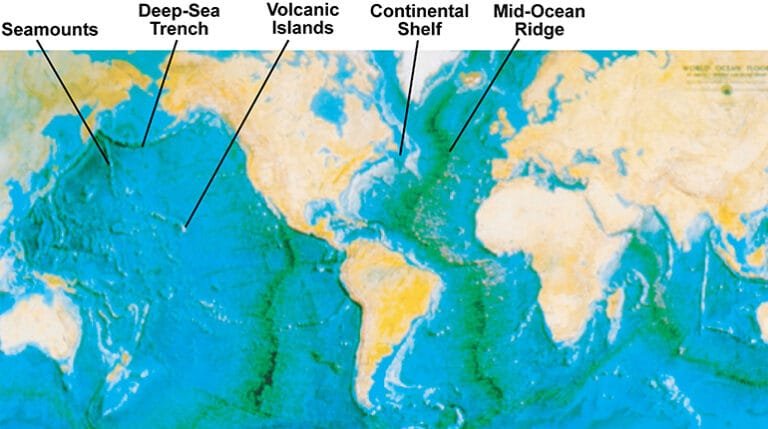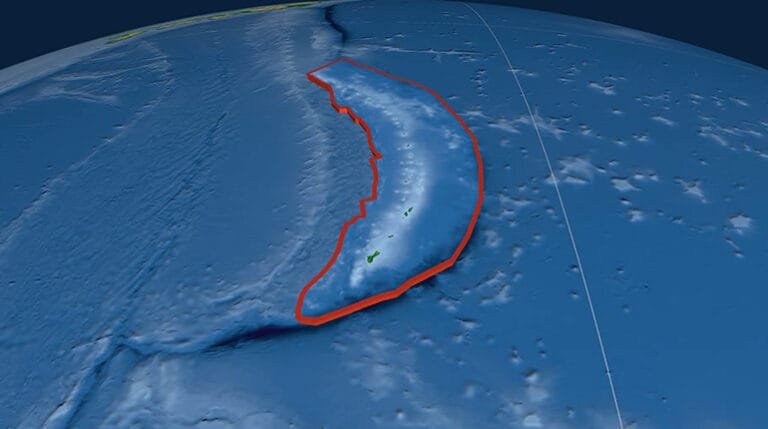How Flood Waters Could Reshape Continents

The account of Noah’s Flood found in the Christian Bible has long been a point of contention in discussions regarding the Earth’s geological history. Many skeptics discount the possibility of a worldwide flood, claiming that geological formations and the current distribution of species undermine the narrative. However, by adopting a young Earth perspective—one that posits the Earth is approximately 6,000 years old and supports a literal interpretation of the Biblical account—we can explore how the mechanics of this event, particularly the floodwaters, could indeed reshuffle the Earth’s continents and reshape its geological features. Understanding these transformations can provide insights not only into geological processes but also into how the world, according to Biblical text, was transformed in ancient times.
This article aims to delve into the scientific and Biblical frameworks surrounding the events of Noah’s Flood, presenting a cohesive understanding of how violent water movements and immense erosional forces could have occurred in a relatively brief timeframe while conforming to a young Earth model. Alongside biblical narratives, we will consider hydrology, erosion, sediment deposition, and tectonic activity during the flood. Each of these factors played a significant role in how flood waters might have sculpted the topography of the rising and falling land masses, contributing to a dramatic reshaping of continents as described in the Bible.
The Biblical Account of Noah’s Flood
In Genesis 6-9, the Bible narrates the story of a global flood initiated by God’s judgment on human wickedness. In response to human sinfulness, God decides to flood the Earth, allowing Noah to build an ark to preserve his family and pairs of every kind of animal. The specific wording in Scripture suggests a cataclysmic and worldwide event, wherein “the fountains of the great deep burst forth, and the windows of heaven were opened” (Genesis 7:11, ESV). This imagery indicates a massive influx of water from multiple sources, resulting in the submersion of all terrestrial life outside of those aboard the ark.
The flood lasted for 40 days and nights, but the effects endured for much longer, leading to the eventual receding of waters and the emergence of new landforms. The significance of this transformation cannot be overstated; from a young Earth perspective, the flood not only signifies divine judgment but also reveals how rapid geological changes can occur through intense environmental forces.
Hydrological Forces during the Flood
The initial phase of the flood would have involved extraordinary hydrological forces which contributed to the reshaping of the Earth’s surface. Such forces include torrential rain, the bursting of subterranean aquifers, and massive run-off from land. Each of these elements created a multi-faceted hydrological system with the capability of transporting vast quantities of soil, rock, and sediment.
The intense rainfall described in Genesis—”the rain fell upon the Earth forty days and forty nights” (Genesis 7:12, ESV)—would have created conditions similar to modern-day deluges but on a much larger scale. Here’s how hydrological forces could substantially reshape continents:
Torrential Rain and Erosion
The sheer volume of rain would lead to widespread erosion, carving valleys and canyons into the landscape. The impacts of such erosion can be compared to the observable effects of modern-day flooding, where riverbanks erode and new paths are carved through geological formations. As the floodwaters surged across land, they would rapidly erode soil and rock, transporting these materials to other locations. This sediment redistribution could give rise to entirely new landscapes over a relatively short period of time.
Subterranean Pressure Release
Beneath the surface, the sudden release of subterranean pressure could have resulted in tremendous forces that reshaped the crust itself. Geological evidence indicates that many deep-rooted features, like mountains and valleys, are a result of tectonic activity. During the flood, shifting tectonic plates could have led to increased volcanic activity, resulting in icelandic eruptions or the formation of new land masses above sea level.
This potential to reshape continents aligns well with a young Earth viewpoint, which suggests that major geological events like the Flood could coincide with significant tectonic shifts.
Depositional Processes
As floodwaters receded, the process of sediment deposition would dramatically alter the landscape. Sedimentary layers typically form over extended periods, but a global flood could lead to rapid sedimentation observed in various fossil records. Large amounts of sediment would accumulate in certain areas, creating new landforms such as deltas and riverbanks, which would have long-lasting effects on local ecosystems.
Understanding Sedimentary Layers
Fossils found within the sedimentary layers also support the notion that a significant event, such as the flood, could have introduced vast quantities of biological material. The rapid burial of organisms in sediment can help explain fossil formation, particularly in relation to a sudden, catastrophic environmental change. This deposition would also capture different organisms residing in various ecosystems before the flood, preserving a mosaic of life distinctly altered after the waters receded.
Stratigraphy and Flood Narratives
In a young Earth view, both geologic stratification and fossil records can be assessed in the light of Noah’s Flood. Instead of millions of years of gradual sediment deposition, it would be practical to interpret these layers as evidence of diverse ecosystems that existed before, during, and immediately after the floodwaters. Throughout various strata, we would find indicators of catastrophic events linking directly back to this pivotal Biblical episode.
Tectonic Activity and Continental Shift
The potential for the flood to stimulate tectonic activity leads to meaningful implications for our understanding of continental drift and geological formation. The theory of plate tectonics suggests that the Earth’s lithosphere is divided into plates that float on the semi-fluid asthenosphere beneath. Rapid shifts in these plates could result from the colossal pressure created by water masses during a cataclysmic flood event.
Plate Movements Triggered by Water Weight
The weight of water combined with the sudden geological shifts could lead to significant movements of tectonic plates, possibly resulting in the creation of mountain ranges or deep ocean basins. This would assert the idea that both tectonic and erosive processes may have occurred simultaneously and in a compressed geological timeframe during the flood, leading to the rapid reshaping of our continents as described in the Bible.
Climate Impacts Post-Flood
The immediate aftermath of the flood would have also generated atmospheric and climatic changes that reshaped the continents in later years. With the dramatic alteration of land and the abundance of newly exposed terrains, eco-systems would have adapted and changed. Additionally, changes in climate patterns could greatly influence how precipitation would distribute over the reshaped continents.
Flood and Global Ecosystems
Ready adaptation and resilience of the life forms emerging post-flood could facilitate a rapid recolonization of the altered lands, resulting in the dispersion of species across geographical boundaries that had previously defined their existence. This can be illustrated through the spread of flora and fauna as they adapted to their new environments, leading to the diversification of life that many of us see today.
Conclusion
The events surrounding Noah’s Flood, described in the Bible, offer compelling insights into how powerful water movements could have reshaped continents dramatically. By combining scriptural interpretations with scientific inquiry from a young Earth perspective, we see how a worldwide cataclysm could serve as a catalyst for significant geological changes. Through hydrology, erosion, sedimentation, and tectonic shifts, the flood narrative resonates with our understanding of geological processes, challenging modern skepticism and affirming the Biblical account’s validity.
In this way, the story of Noah’s Flood moves beyond theological interpretation to inspire scientific exploration and understanding of our Earth’s history. As young Earth proponents delve deeper into the implications of this narrative, we continue to uncover the fundamental truths interwoven into the fabric of creation.




